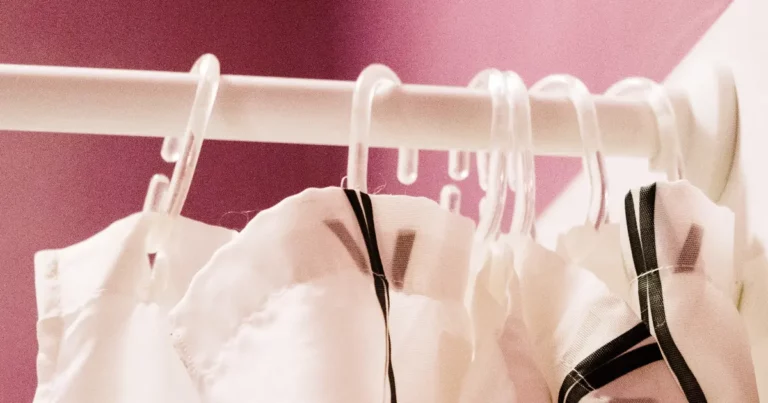Can You Recycle Shower Curtain Liners?Explore 5 Astonishing Truths
As you stand at the crossroads of sustainability and convenience in your bathroom, you might wonder: Can you recycle shower curtain liners?
You’ve likely never given it much thought. But these liners are silent players in the grand environmental theater. You might wonder if they’re just another piece of plastic contributing to mounting waste or if there’s a hidden green potential within their folds.
In this discussion, you’ll uncover the complex nature of shower curtain liner materials and what that means for their recyclability. You’ll also learn about the steps you can take to ensure that your bathroom habits align with your eco-conscious values.
So, before you throw away that old liner and reach for a new one, let’s explore the impact of your decision on the future of our planet.
Table of Contents
Can You Recycle Shower Curtain Liners:Key Takeaways
- You cannot recycle vinyl shower curtain liners due to their toxic components like lead and chlorine.
- Polyester liners are machine washable and recyclable with fabric. But they may veer away from toxic chemicals and be challenging to recycle.
- PVC, PEVA, and EVA liners are less toxic than vinyl. But they are also challenging to recycle.
- Fabric liners made of cotton or hemp are durable and compostable at the end of their lifespan. They are a more eco-friendly option.
Types of Shower Curtain Liners
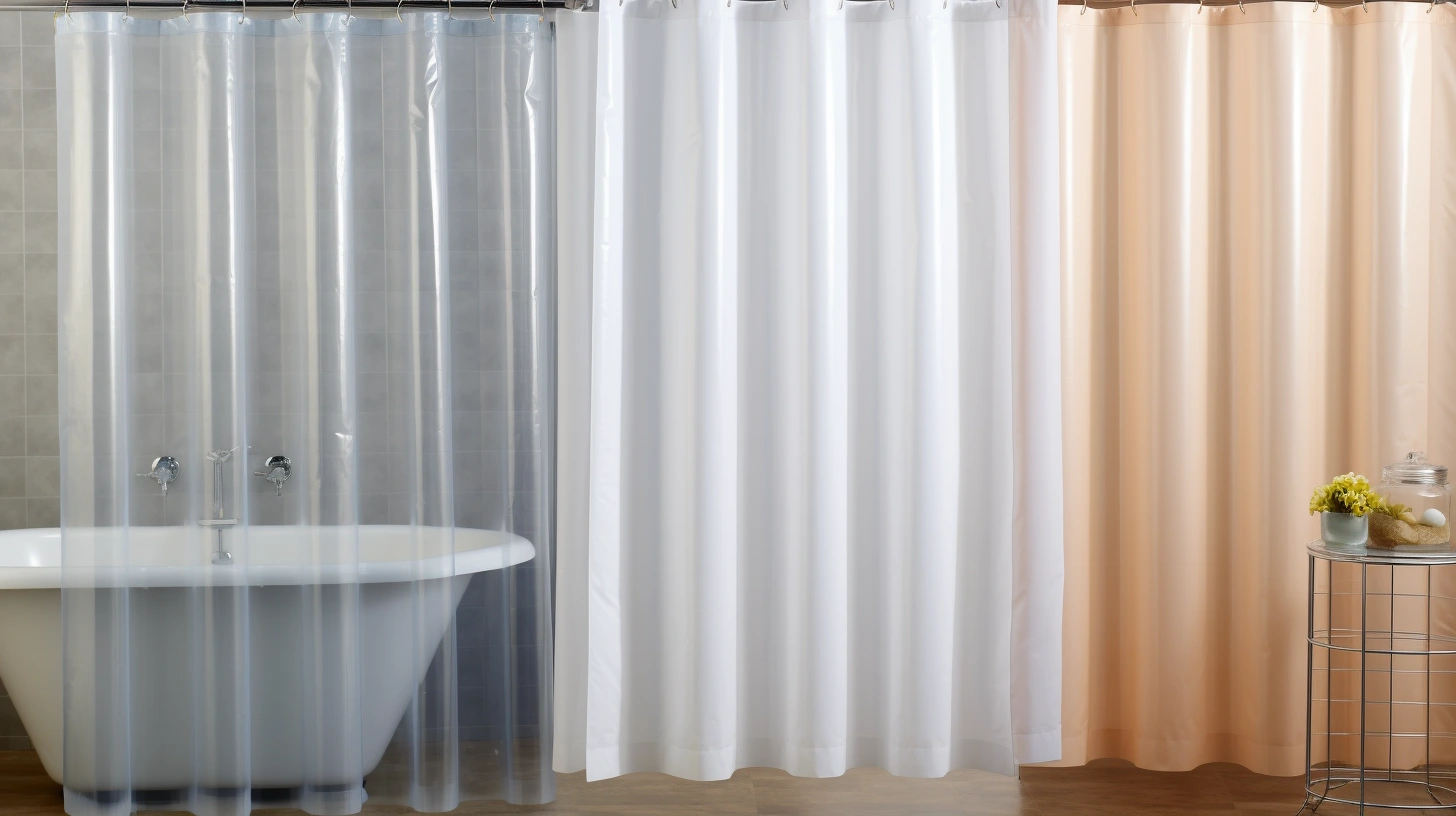
When selecting a shower curtain liner, it’s essential to understand the liner materials. The most common materials are PVC (polyvinyl chloride), PEVA, EVA, polyester, and fabric. Each has its own environmental implications and recyclability.
Here’s a brief rundown:
- PVC (polyvinyl chloride): Often non-recyclable, it can release harmful chemicals during production and disposal.
- PEVA/EVA: Less toxic than PVC but still challenging to recycle in traditional systems.
- Polyester/Fabric: Options like cotton or hemp curtains are washable shower curtains that are more environmentally friendly and potentially reusable at the end of their life.
For a more sustainable choice, you might lean towards polyester or a fabric liner. You can recycle, wash, and reuse these materials easily, minimizing your environmental impact.
Pros and Cons

Considering the various types of shower curtain liners available, each comes with its own set of advantages and drawbacks. They will impact both your bathroom functionality and your environmental footprint.
Fabric shower liners are a sustainable option, as they offer durability and can even be composted. Cotton or hemp liners present a compostable end-of-life scenario. But their everyday practicality mightn’t match synthetics.
Although they are recyclable, polyester liners may pose a challenge when it comes to recycling. However, they are a better option than plastic curtain liners as they do not contain toxic chemicals.
On the flip side, you can’t recycle traditional PVC liners through regular municipal systems. They may pose environmental risks due to their toxic composition. In contrast, aluminum liners emerge as a recyclable and more eco-conscious choice, assuming you prioritize recyclability in your bathroom essentials.
Importance of Recycling Bathroom Products
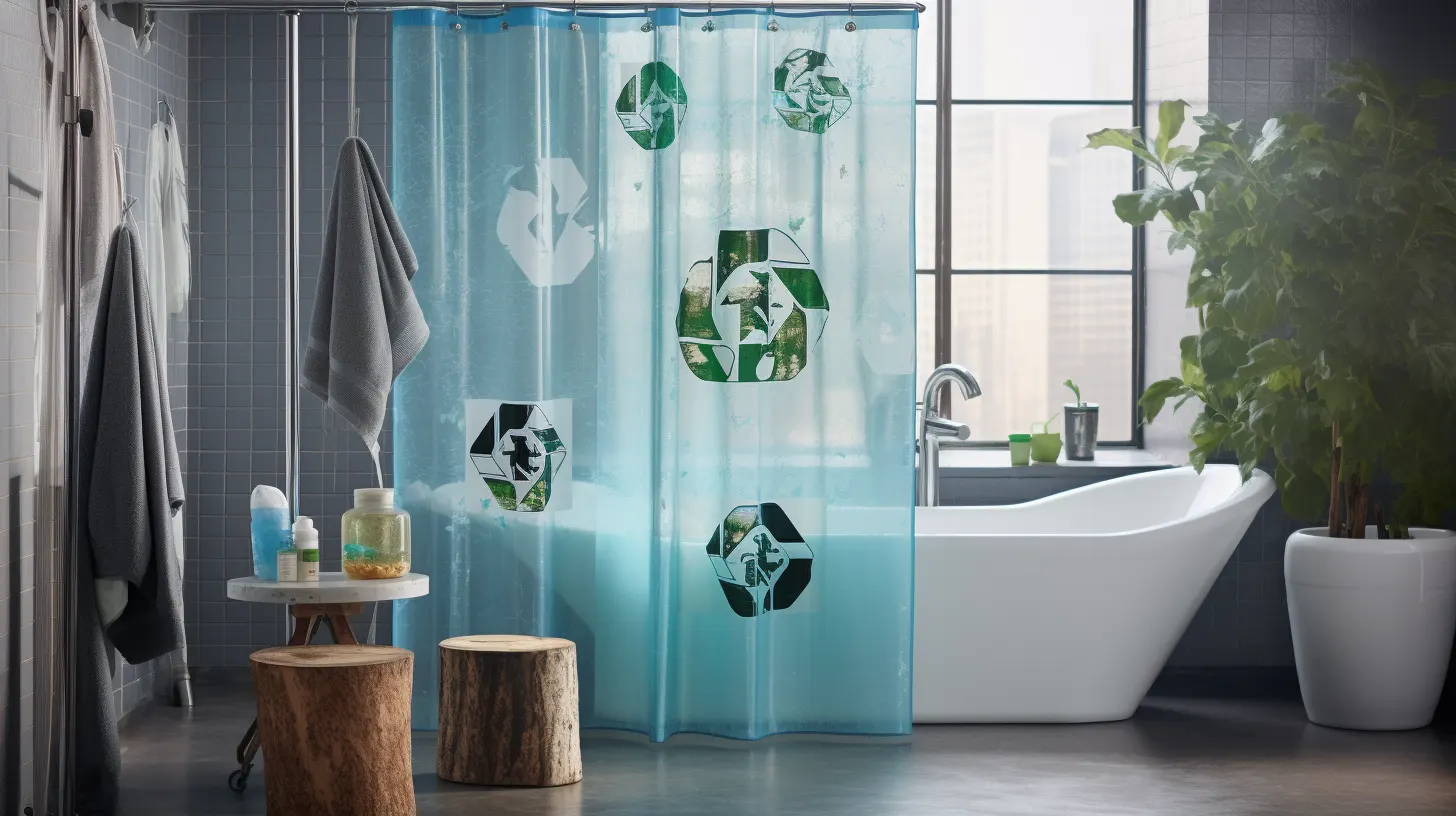
In order to lessen the harm that materials like PVC cause to the environment, recycling bathroom products like shower curtain liners is crucial. These materials are dominating our landfills and pose toxic challenges. Recycling plastic items from your bathroom not only clears up space in your home but also contributes to a larger movement to reduce harmful waste.
Many shower curtain liners are made from PVC, a plastic notoriously difficult to recycle. This material ends up in landfills, where it can take centuries to decompose, releasing toxic chemicals into the environment. To combat this issue, you can look for alternative materials that are more eco-friendly or check if your local recycling centers accept PVC.
Consider these options to manage your old shower curtain liner responsibly:
- Research: Look for recycling centers that accept PVC or vinyl shower curtain liners.
- Repurpose: Find creative ways to reuse your old liners, such as drop cloths or outdoor furniture covers.
- Replace: Opt for shower curtain liners made from materials like PEVA or fabric that are recyclable or biodegradable.
Challenges in Recycling Shower Curtain Liners
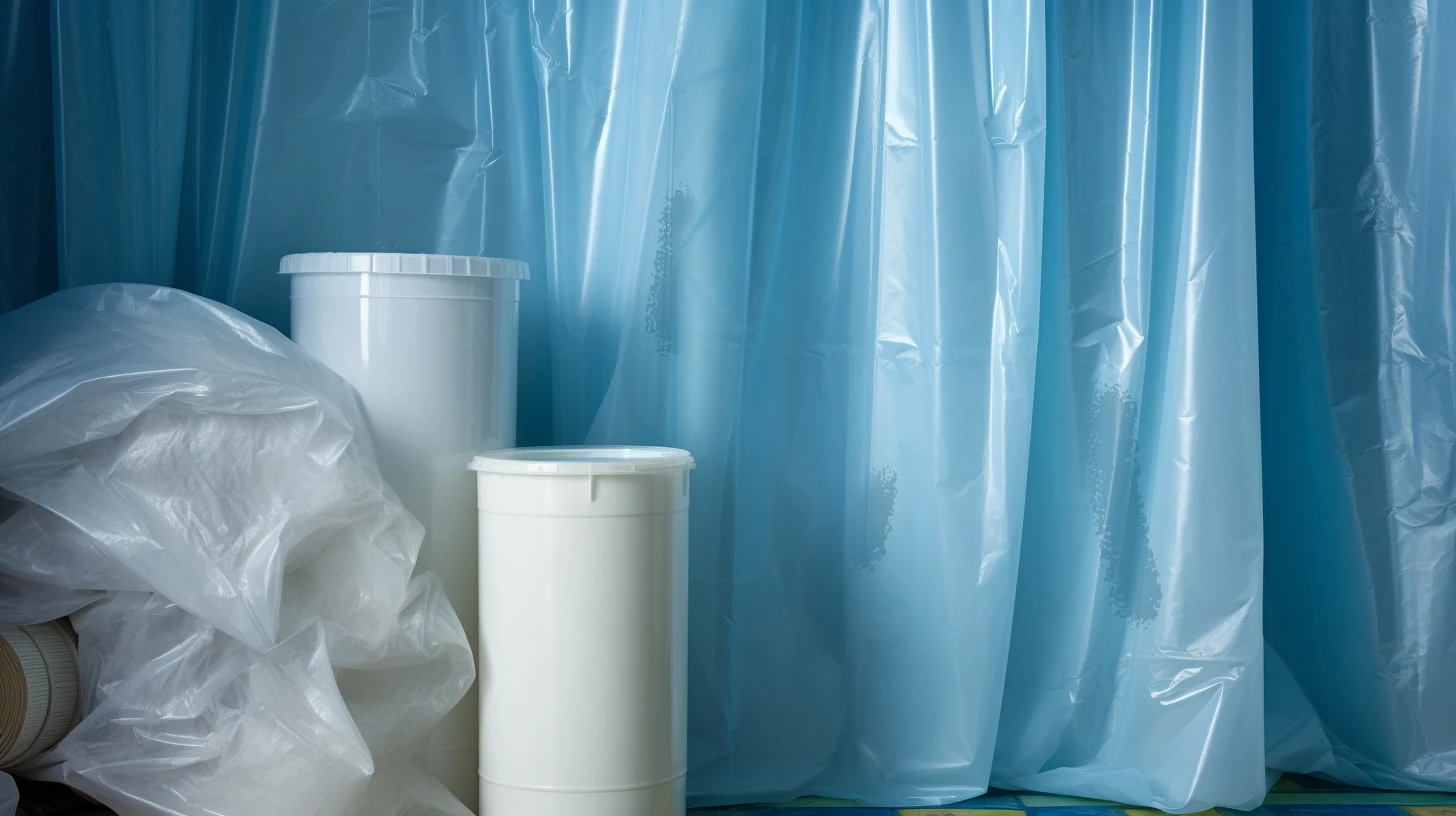
Despite the widespread use of PVC liners, this material is not easy to recycle due to its complexity and resistance to conventional recycling processes. You cannot simply throw away your plastic liner made of PVC in the recycling bin. It’s not as straightforward as recycling paper or aluminum. The challenges are multifaceted and require a closer look to understand why this is the case.
Here’s a breakdown of the challenges you’re likely to face:
| Challenge | Description | Impact |
| Material | Most liners are made of PVC, a difficult-to-recycle plastic. | Limits local recycling options. |
| Contamination | Liners often contain residue and metals, which can contaminate the recycling process. | Requires specialized facilities. |
| Complexity | Different types of plastics used in liners add to the recycling complexity. | Increases processing difficulties. |
| Companies for recycling | Offers a paid recycling service, but it’s not a cost-effective solution for everyone. | High barrier to entry for recycling. |
In essence, you’re dealing with a product that’s not designed with the end-of-life stage in mind. The recycling process for a plastic liner is not only challenging but often non-existent without services like TerraCycle, and even then, it’s a service that comes at a steep price.
How to Properly Recycle Shower Curtain Liners
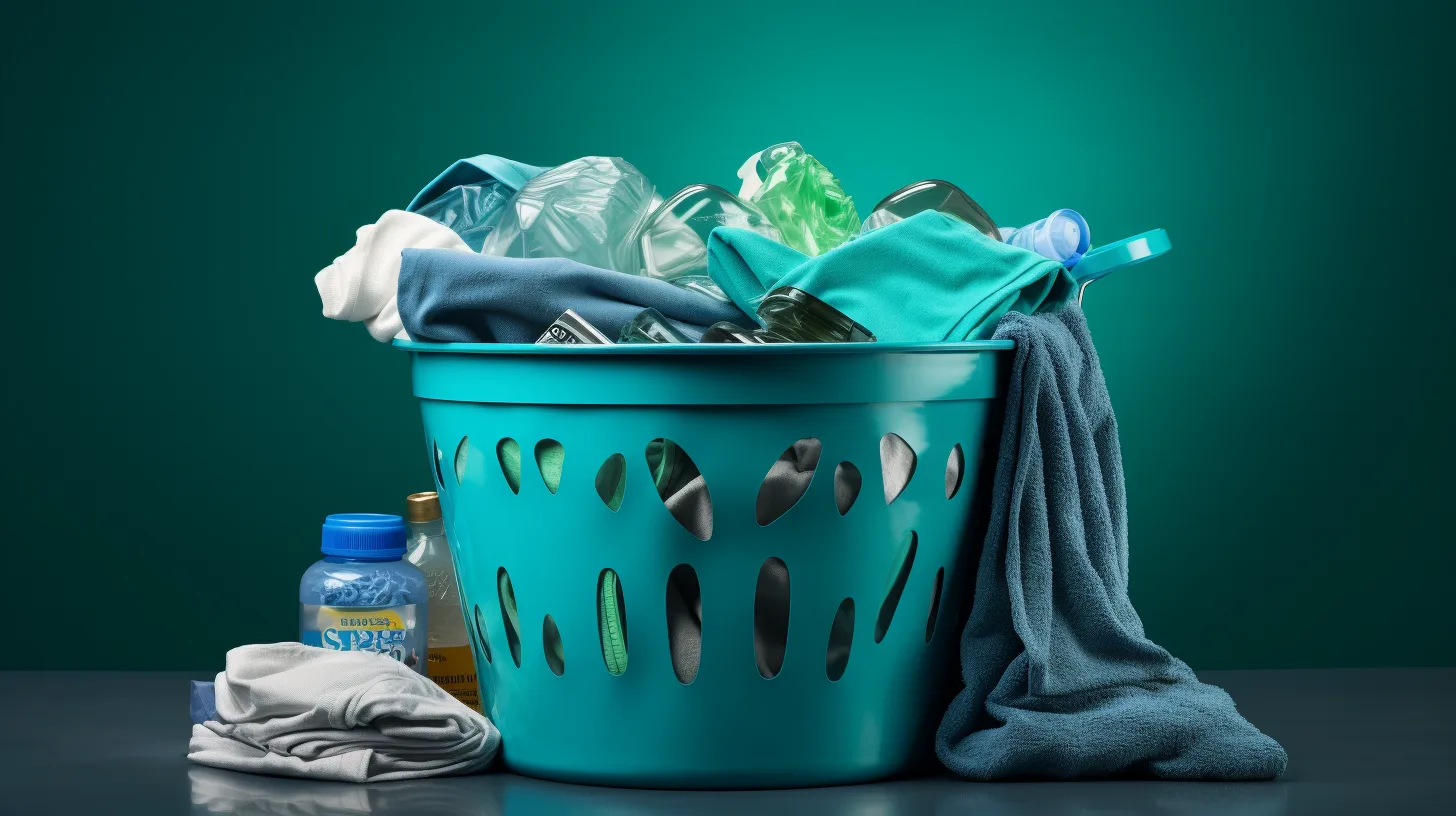
You need to first identify the material of your liner to determine if it’s recyclable.
Check your local recycling guidelines to see if they accept the type of liner you have.
If it’s eligible, prepare your liner for recycling by cleaning it and locating a facility or program specializing in recycling bathroom accessories.
Step 1: Identify the Material
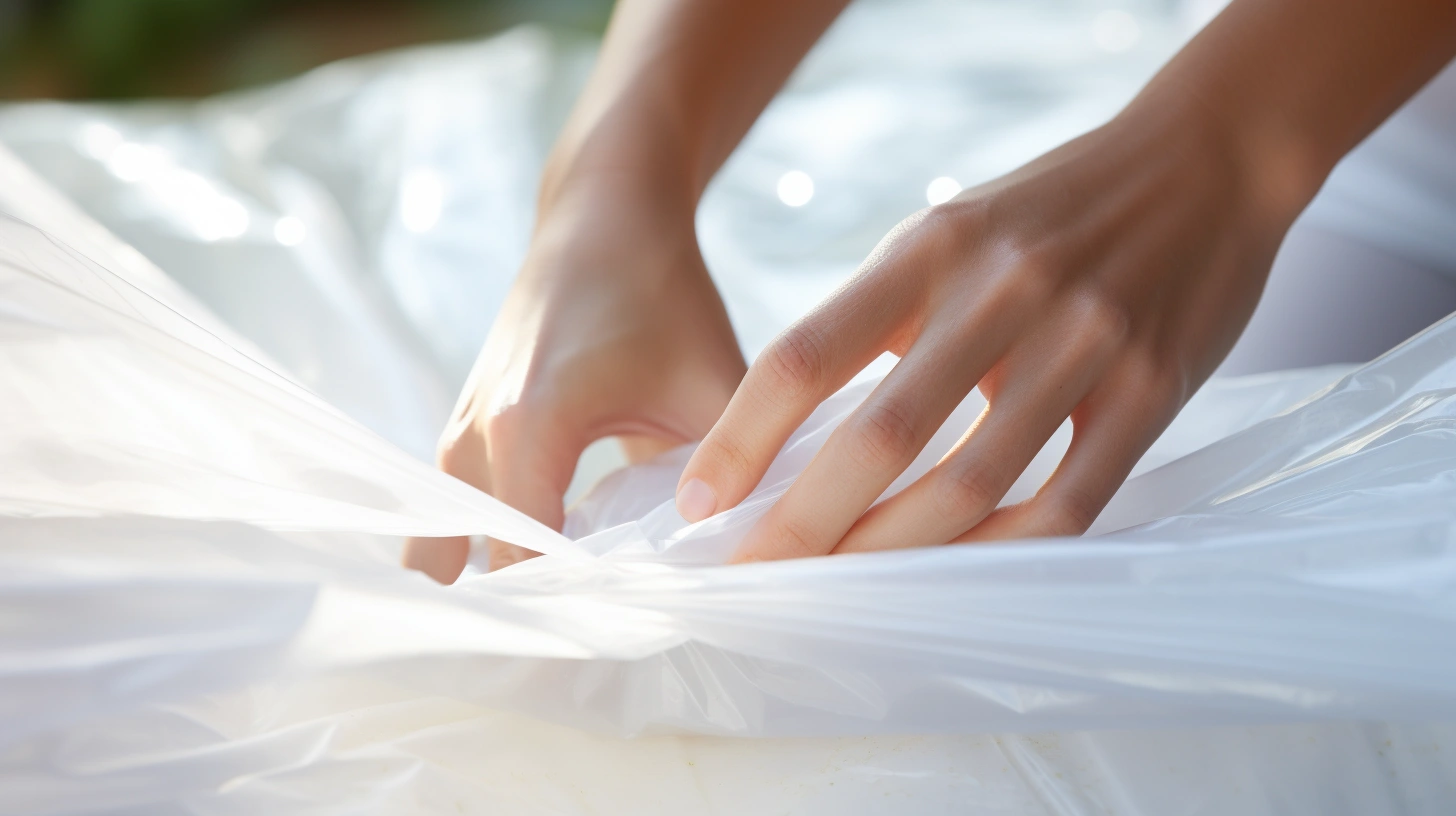
Before considering recycling options, it’s essential to determine the material of your liner. Not all types are recyclable through conventional means. Plastic shower curtains, especially those made of PVC or vinyl, are often unacceptable in regular recycling programs. To properly recycle your liner, you need to know what materials it’s made from.
Step 2: Check Local Recycling Rules
To ensure your liner is recycled properly, check with your local recycling program to determine if they accept such items. Plastic shower curtains, particularly those made of PVC, often can’t be tossed in your curbside bin. The local recycling rules vary, so it’s critical to verify whether your plastic liner qualifies. If your municipality doesn’t accept them, look for alternative programs like TerraCycle’s Zero Waste Box.
For shower curtain liners made from recyclable materials like polyester, your local facility might process them. However, always double-check to avoid contaminating the recycling stream. Remember, the proper way to recycle liners hinges on following the specific guidelines set by your local recycling authorities.
Step 3: Prepare the Liner for Recycling
If you’ve got a recyclable liner, here’s how to get it ready:
- Remove any hooks or metal pieces that could contaminate the recycling process.
- Clean the liner thoroughly in your washing machine. Use a gentle cycle with mild detergent to remove soap scum and mildew.
- Dry the liner completely before taking it to a recycling facility. Doing so will prevent mold growth and ensure it won’t be rejected.
Alternatives to Recycling

If you’re looking for ways to avoid tossing out your old shower curtain liner, consider upcycling it into something new.
You can transform these liners into practical items like tote bags or protective mats for messy projects.
For an eco-friendly disposal, seek out tips to reduce waste, such as investing in a washable curtain that won’t need frequent replacement.
Upcycling Ideas for Old Liners
You can give your old liners a second life by creatively upcycling them into useful items around your home instead of adding them to the landfill. Here are some upcycling ideas that are practical and easy to implement:
- Transform your old liner into a durable picnic blanket that’s easy to clean and ideal for outdoor use.
- Reuse the liner as a drop cloth when painting or doing messy crafts to protect floors and furniture.
- Cut and sew the material into custom-sized bags for storing or transporting wet items, from swimsuits to gym clothes.
- Cut it into strips to protect car seats from spills or pets.
- Make it a durable slip-n-slide for the kids.
Tips for Reducing Shower Curtain Liner Waste

To effectively diminish the environmental footprint of your bathroom habits, consider adopting a washable and durable shower curtain as a sustainable substitute for traditional PVC liners. These washable options not only last longer but also stand up to mildew, reducing the need to frequently replace them like you might with plastic ones.
Here are a few strategies to further reduce waste:
- Opt for fabric curtains: They’re often washable and can serve as a chic, eco-friendly alternative.
- Repurpose old liners: Use a curtain as a drop cloth for painting or as a protective cover in various home projects.
- Creative reuse: Find innovative ways to reuse a shower curtain liner in DIY crafts or outdoor activities.
Each of these steps helps to cut down on waste and promote a more sustainable lifestyle.
Conclusion
In conclusion, you’re now equipped to navigate the complexities of recycling shower curtain liners.
While traditional materials like PVC pose recycling challenges, you’ve learned that alternatives exist. By choosing eco-friendly options and checking recycling protocols, you’re contributing to a greener planet.
Remember, every sustainable choice you make in the bathroom and beyond has a ripple effect on our environment.
Embrace your role as an eco-conscious consumer. Let your everyday actions reflect your commitment to Earth’s well-being.
FAQs
Are old shower curtains recyclable?
You’re right to ask—most old shower curtains aren’t recyclable due to their PVC or vinyl composition. Look for polyester or fabric options if you’re seeking recyclable alternatives.
When should I throw out my shower curtain liner?
You should toss your liner when it’s moldy, torn, or ineffective. Consider eco-friendly, washable liners to avoid frequent replacements and reduce your environmental footprint.
What to do with shower liner after a shower?
After your shower, you should rinse off any soap residue and hang the liner to dry. This prevents mold and extends its life, ensuring you don’t need to replace it as often.
Are plastic shower curtain liners washable?
You can wash plastic shower curtain liners, but they’re less durable than fabric alternatives. Opt for machine-washable polyester to ensure longevity and reduce environmental impact. Always check the care labels for proper maintenance.







